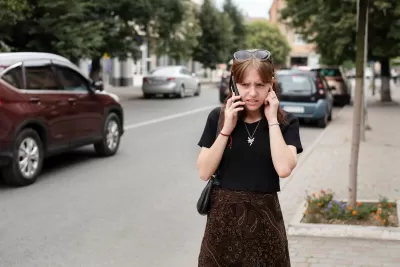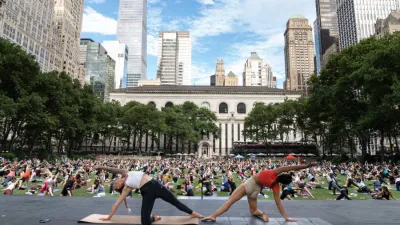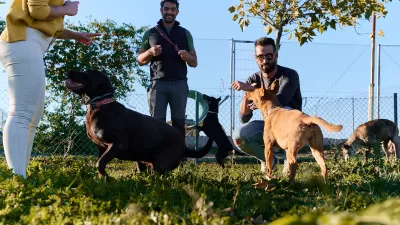Researchers are starting to understand how people with conditions like autism experience cities differently — and how to design for the neurodiverse brain.

“Cities and schools are not typically designed by, or for, people with conditions such as autism,” writes Alexandra Lange in Bloomberg CityLab. Now, architects are working to change that by understanding how neurodivergent people experience cities and designing spaces that address their needs.
A study conducted in a New York City public school surveyed students about their experience and prototyped designs that aim to engage kids in ways that are comfortable for them. The study included an engagement exercise on soundscapes, which had students identify sounds on their playground. The exercise resulted in the installation of three sound “pods” where students can listen to soothing soundscapes and buffer outside noise.
“The result, they hope, will be prototypes designed for typical urban conditions like playgrounds or plazas, made with a broader understanding of what urban comfort can be. This might be noise-buffering. It might be more welcoming signage. It could be plants, maybe some softer seating.” Like other design elements geared toward the needs of specific groups, these interventions would make public spaces more pleasant for all users.
FULL STORY: How to Build a Neurodiverse City

Planetizen Federal Action Tracker
A weekly monitor of how Trump’s orders and actions are impacting planners and planning in America.

Trump Administration Could Effectively End Housing Voucher Program
Federal officials are eyeing major cuts to the Section 8 program that helps millions of low-income households pay rent.

The 120 Year Old Tiny Home Villages That Sheltered San Francisco’s Earthquake Refugees
More than a century ago, San Francisco mobilized to house thousands of residents displaced by the 1906 earthquake. Could their strategy offer a model for the present?

Missouri Law Would Ban Protections for Housing Voucher Users
A state law seeks to overturn source-of-income discrimination bans passed by several Missouri cities.

Op-Ed: Looking for Efficiency? Fund Intercity Buses
Much less expensive than rail, intercity buses serve millions of Americans every year, but public subsidies are lacking.

Philadelphia Councilmember Proposes Transit Access Fund
The plan would allocate 0.5 percent of the general fund toward mobility subsidies for low-income households.
Urban Design for Planners 1: Software Tools
This six-course series explores essential urban design concepts using open source software and equips planners with the tools they need to participate fully in the urban design process.
Planning for Universal Design
Learn the tools for implementing Universal Design in planning regulations.
Ada County Highway District
Clanton & Associates, Inc.
Jessamine County Fiscal Court
Institute for Housing and Urban Development Studies (IHS)
City of Grandview
Harvard GSD Executive Education
Toledo-Lucas County Plan Commissions
Salt Lake City
NYU Wagner Graduate School of Public Service





























